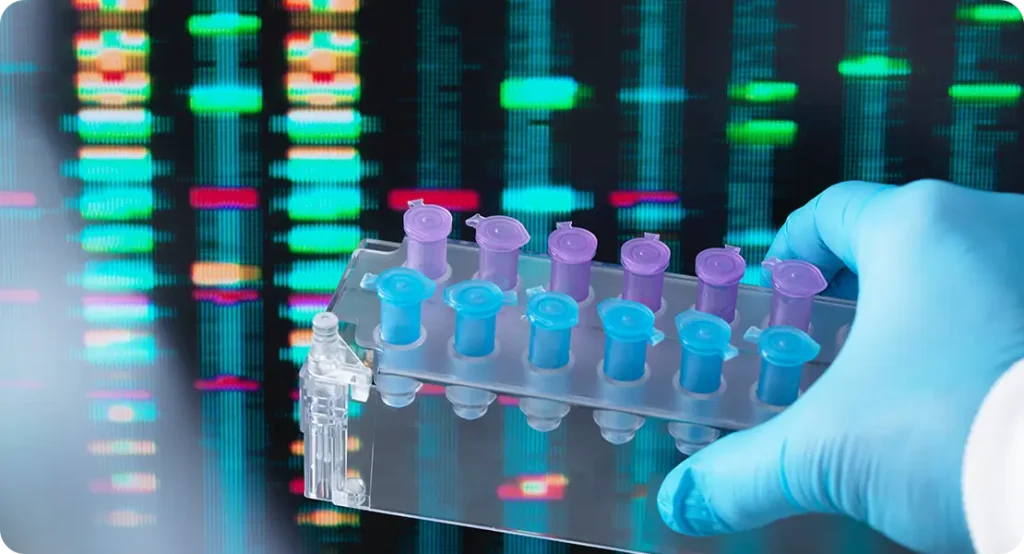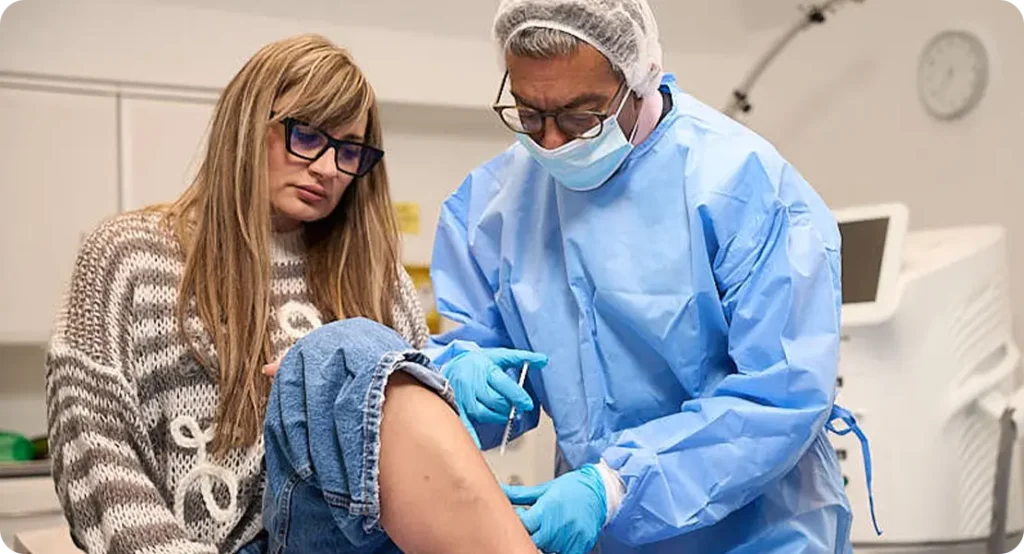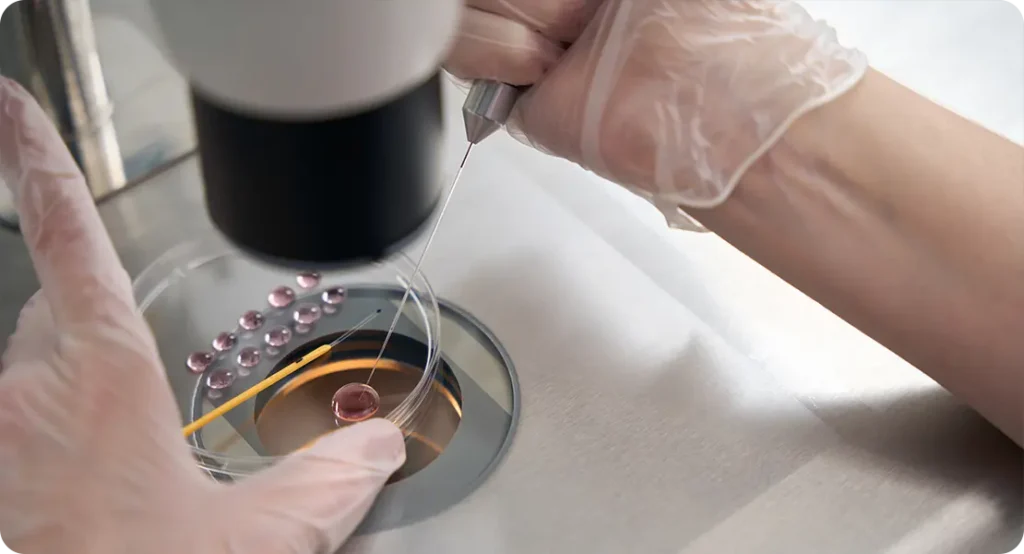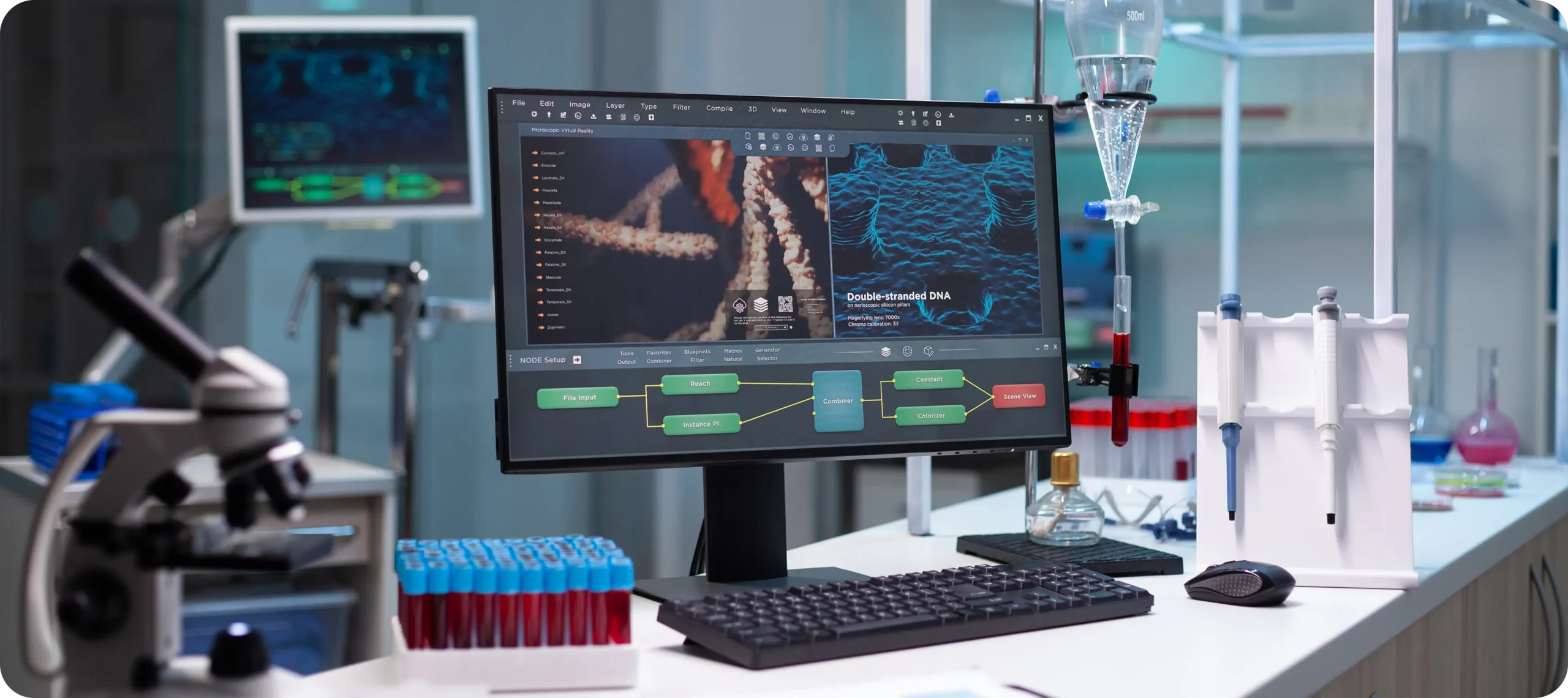Dermatology is changing fast, and if you’re someone who likes to keep ahead of the curve—whether you’re a skincare enthusiast or a medical professional—there’s a lot to be excited about. In the coming years, we’re going to see breakthroughs that not only enhance the way we treat skin conditions but also improve how we prevent and diagnose them. Here’s a look at ten major advances in dermatology that are just around the corner. These are not far-fetched dreams—they’re realistic, research-backed developments that will soon be making their way into clinics and treatment rooms near you.
1. Personalised Skincare Through Genomic Testing
Imagine being able to get a skincare routine that’s completely tailored to your DNA. That’s the direction we’re heading in. Genomic testing is giving dermatologists the tools to understand how your skin behaves on a molecular level. Instead of trying different products and hoping for the best, personalised skincare could take out all the guesswork by analysing genetic markers that influence things like pigmentation, collagen production, inflammation, and sensitivity.
This kind of precision medicine will allow for early identification of skin conditions you’re predisposed to, even before symptoms appear. Let’s say your genetic profile shows a tendency toward psoriasis or eczema—your dermatologist could help you take proactive steps to reduce the risk of flare-ups, long before they begin. That’s a huge shift from reactive treatment to preventative care.
But it’s not just about risk. Genomic testing could also influence cosmetic dermatology. If we know how your skin ages at the genetic level, your anti-ageing treatments can be fine-tuned accordingly. You might need more antioxidants, or maybe your skin is more prone to losing elasticity than moisture. Whatever the case, the solution won’t come from a shelf—it’ll come from your genes.
Of course, privacy and data security will be big considerations as this tech rolls out. Your genetic information is sensitive, so we’ll need strong safeguards to ensure it’s only used to benefit your health. Still, the potential is enormous, and as testing becomes more affordable, this type of personalised approach will become the norm rather than the exception.

In the near future, walking into a dermatologist’s office may include a cheek swab along with your usual consultation. And with that single step, your treatment could become smarter, faster, and infinitely more effective.
2. AI-Powered Skin Cancer Detection
Skin cancer is one of the most common cancers in the world, but when caught early, it’s also one of the most treatable. That’s why AI technology is being hailed as a game-changer in the early detection of skin cancers like melanoma. Artificial intelligence tools are being trained to analyse skin lesions with accuracy that’s on par with—or even better than—some dermatologists.
These systems use deep learning to examine images of moles, freckles, and other skin irregularities. The more data they’re fed, the smarter they become. Right now, they’re being integrated into apps and diagnostic tools that allow both clinicians and, in some cases, patients to flag suspicious lesions for further investigation. That could make a huge difference in places where access to a dermatologist is limited.
But AI isn’t here to replace the human touch—it’s more about enhancing what dermatologists can do. Think of it like a second set of eyes, capable of spotting things that might be missed during a standard exam. It’s especially useful in busy clinics or high-risk patients who need regular mole mapping. With AI on board, those check-ups become more thorough and less prone to oversight.
Beyond cancer, AI tools are also being developed to help diagnose acne, rosacea, eczema, and even rare skin disorders. With machine learning improving every year, we’re on the brink of having an AI assistant for nearly every dermatological consultation, helping to speed up diagnosis and improve accuracy across the board.
Soon enough, AI could become as routine as a dermatoscope in your dermatologist’s toolkit. You might even be able to scan your own skin at home using a smartphone app, with AI offering a preliminary assessment and guiding you on when to seek medical advice. It’s about making expert knowledge more accessible, more often.
3. Bioprinted Skin for Wound Healing and Testing
Bioprinting might sound like something out of science fiction, but it’s rapidly becoming a practical solution in dermatology. Using 3D printers loaded with living cells, scientists can now create layers of skin tissue that mimic the real thing. Initially developed for wound healing, this technology has far-reaching applications that could transform both medicine and cosmetics.
For patients with burns, ulcers, or surgical wounds, bioprinted skin could provide a faster, more effective way to heal. These printed layers are biologically compatible, meaning the body is less likely to reject them. In the future, this could drastically reduce the need for painful skin grafts, while also improving recovery time and cosmetic outcomes.
Pharmaceutical companies are also keenly interested in bioprinting, but for a different reason. It offers a cruelty-free way to test new skincare products and medications. Instead of relying on animal testing or limited human trials, researchers can experiment on lab-grown human skin, which responds more accurately to active ingredients.
There’s even talk of printing personalised skin patches, tailored to match your skin tone and biological makeup. This could be useful not just for cosmetic procedures but also for delivering medication through the skin in a controlled, steady dose—think of it like a smart plaster with built-in treatment.
It’s early days, but the pace of development is promising. As printing techniques improve and cell cultures become more stable, we might eventually reach the point where custom skin grafts can be created on demand for every patient who needs one. And that would be a revolution in skin repair.
4. Injectable Biologics for Chronic Skin Conditions
If you’ve been dealing with chronic skin conditions like eczema or psoriasis, you know how frustrating and persistent they can be. Topical treatments often provide only short-term relief, and oral medications come with side effects. That’s where injectable biologics come in—they’re a new class of drugs designed to target specific parts of the immune system, offering long-term control without the harsh blanket effects of older treatments.

These biologics work by blocking particular proteins or pathways that drive inflammation in the skin. For example, some of the latest injections target interleukin-13 or interleukin-17, which are heavily involved in the immune response in eczema and psoriasis. By neutralising these proteins, the biologics stop the condition at the source, not just on the surface.
The beauty of this approach is precision. You’re not suppressing your entire immune system, just the part that’s overactive. Patients are finding their symptoms improve dramatically—less redness, less itchiness, and longer periods of remission. And because they’re administered via injection, these treatments are ideal for people who struggle with applying creams every day or remembering to take tablets.
Biologics are already available, but the next wave is expected to be even more refined, with better safety profiles and longer-lasting effects. Some might only need to be injected once every few months, making them more convenient than ever. There’s also hope that these treatments could be expanded to other inflammatory skin conditions that haven’t yet seen breakthroughs.
So, while it might seem intimidating to think of injections as part of your skincare routine, they could actually bring a new level of control and stability to your daily life. The future of chronic skin condition management is likely to be a jab away.
5. Microbiome-Based Treatments
We often forget that our skin is home to millions of bacteria, fungi, and viruses—most of them helpful. That invisible ecosystem, known as the skin microbiome, plays a crucial role in keeping our skin healthy and balanced. So it’s no surprise that dermatology is starting to focus on microbiome-based treatments that support these natural defences rather than strip them away.
In the past, we relied heavily on antibiotics and harsh antiseptics to fight acne or infections. But those treatments can disrupt the microbiome, sometimes making problems worse. The new generation of skincare is all about working with your microbiome, not against it. Think topical sprays, creams, or serums enriched with live probiotics or beneficial bacteria to restore harmony on your skin.
One exciting development is the use of bacteriophage therapy—where viruses that naturally target harmful bacteria are used to clear up conditions like acne or eczema without affecting the rest of your microbiome. It’s precise, gentle, and avoids the pitfalls of resistance seen with antibiotics.
Researchers are also exploring how microbiome imbalances relate to pigmentation issues, rosacea, and even premature ageing. By rebalancing your skin’s microbial environment, it might be possible to address multiple concerns at once, without resorting to strong medications or harsh treatments.
The future could involve personalised microbiome mapping, where your skin’s unique bacterial profile is analysed and matched with custom treatments. It’s a shift towards skin wellness rather than symptom control—and it’s already starting to show up in advanced dermatology clinics and niche skincare brands.
6. Smart Wearables for Skin Monitoring
You’ve probably heard of smartwatches that track your heart rate or sleep cycles. But what about wearables that track your skin health? This is one of the more futuristic developments in dermatology, and it’s not as far off as you might think. Smart patches and sensors are being developed that can monitor everything from hydration and UV exposure to inflammation and allergic reactions.

Imagine a tiny patch on your arm that tells you when your skin is dehydrated, or when you’ve been in the sun too long. These devices can alert you before damage occurs, helping you take preventative action rather than dealing with the consequences later. Some are even being designed to release tiny doses of skincare ingredients in response to real-time data—talk about responsive skincare.
For people with chronic skin conditions like eczema or rosacea, wearables could be a game-changer. They’ll be able to detect flare-up patterns, identify triggers, and feed that data into an app or dashboard. Over time, you and your dermatologist will have a detailed map of what’s really going on with your skin, which means more informed treatment choices and better outcomes.
There’s also a lot of promise in using smart wearables for wound care. Devices are being tested that can track how a wound is healing, monitor infection risk, and even deliver medication automatically. This kind of technology could make post-surgical care much more efficient and less reliant on in-person visits.
Of course, with all this data comes the need for security and ethical use. But with the right safeguards, smart wearables could add a new dimension to how we care for our skin, blending health tech with dermatology in ways we’ve never seen before.
7. Laser Nanotechnology for Precision Treatments
Laser treatments have come a long way in recent years, but nanotechnology is set to take them to a whole new level. We’re talking about highly focused lasers capable of targeting cells and tissues at the nanoscale. That means more accurate results, fewer side effects, and faster healing times across a wide range of treatments—from pigmentation to hair removal to scarring.
Traditional lasers can sometimes damage surrounding tissue, especially when used on sensitive areas or darker skin tones. Nanotechnology allows for much finer control, reducing collateral damage and improving safety for all skin types. It’s a significant step forward in making laser treatments more inclusive and effective.
These ultra-precise lasers can also be used to deliver medications deep into the skin. By temporarily disrupting the skin barrier at a microscopic level, nanolasers can help active ingredients penetrate where they’re needed most. This could revolutionise how we treat everything from wrinkles to hyperpigmentation, with better results and fewer applications.
One of the most exciting areas is in scar revision. Early studies suggest that nanolaser treatments can stimulate collagen production in very targeted ways, improving the texture and appearance of scars without causing inflammation or trauma to nearby skin. This is particularly promising for people with acne scarring or surgical marks.
It’s still a developing field, but the combination of lasers and nanotech holds huge promise. As the equipment becomes more accessible, you can expect to see these treatments offered in top dermatology clinics within the next few years. And for patients, it means results that are not just visible—but visible with minimal downtime.
8. Gene Editing for Inherited Skin Disorders
Gene editing might sound like something reserved for rare diseases or sci-fi plots, but it’s slowly making its way into dermatology—and it could be life-changing for people with inherited skin disorders. Conditions like epidermolysis bullosa, ichthyosis, or xeroderma pigmentosum are caused by mutations in specific genes, and traditional treatments have always been about managing symptoms rather than solving the root problem. That’s where CRISPR and similar gene-editing technologies come in.

These tools allow scientists to go directly into your DNA and fix the faulty instructions that are causing the skin issue. It’s precise, efficient, and the effects could be permanent. For example, researchers have already used gene editing to correct mutations in skin cells grown in the lab, and then grafted the corrected skin back onto patients. It’s early days, but the results are incredibly promising.
One of the key benefits of gene editing is that it targets the cause, not just the consequence. That could mean a complete halt in disease progression, rather than just easing discomfort. In conditions where the skin blisters or breaks down easily, even a small improvement in structural integrity can have a huge impact on daily life and life expectancy.
Of course, safety is a top priority. The editing needs to be flawless to avoid unwanted changes elsewhere in the genome, and long-term monitoring will be essential. But with better delivery systems and stricter regulatory frameworks, we’re moving towards a time when gene therapy could be offered as part of standard dermatological care for certain conditions.
In the future, a child born with a known skin disorder might receive gene correction in infancy—potentially eliminating the disease entirely. That’s not a distant dream anymore. It’s a real, emerging possibility that could redefine how we treat inherited skin problems from the ground up.
9. Virtual Dermatology Clinics and Remote Diagnostics
The pandemic accelerated the shift towards remote consultations, and dermatology was one of the quickest fields to adapt. But the next evolution of teledermatology is about more than just video calls. Virtual clinics are becoming smarter, faster, and far more capable—integrating AI, imaging tech, and remote diagnostic tools to offer nearly the same standard of care you’d expect in person.
Soon, you might be able to submit a high-res scan of your skin using a smartphone attachment and receive a diagnosis within minutes. Some systems are being designed to analyse skin texture, colour, moisture levels, and more, giving dermatologists a comprehensive picture of your skin’s condition without you ever stepping foot in a clinic.
This is especially valuable for people living in remote or underserved areas, where access to a dermatologist might be limited. By expanding care beyond the traditional clinic walls, virtual dermatology can catch issues earlier and reduce unnecessary delays. It also makes follow-up care much easier, particularly for chronic conditions like acne, rosacea, or psoriasis.
And it doesn’t stop at diagnosis. Treatment plans, prescription refills, and even light therapy sessions can be managed remotely. Some platforms are exploring the integration of wearable tech and home-use devices, so patients can carry out parts of their treatment plan at home while still being monitored by a specialist.
The goal isn’t to replace in-person care, but to offer more flexibility and efficiency. As virtual clinics become more sophisticated, you’ll have the choice to manage your skin health on your terms—whether that’s from your sofa or your smartphone.
10. Regenerative Aesthetics and Stem Cell Therapy
If anti-ageing treatments have always felt a bit superficial to you, get ready for regenerative aesthetics. This fast-developing field is moving beyond Botox and fillers, and diving deep into treatments that aim to restore the skin’s biology rather than just camouflage the signs of ageing. And at the heart of this revolution? Stem cell therapy.

Stem cells have the unique ability to develop into different types of cells. When applied to dermatology, that means they can help regenerate damaged or ageing skin from the inside out. Treatments are being developed where stem cell-derived products—or even the patient’s own stem cells—are introduced into the skin to boost collagen production, stimulate blood flow, and enhance cell turnover.
This isn’t just about looking younger. It’s also about improving skin health at a fundamental level. People who undergo stem cell-based treatments often report firmer, more hydrated skin, better elasticity, and a reduction in fine lines and pigmentation. Because the treatment works with your body’s own repair mechanisms, the results tend to look more natural and last longer.
One exciting area is fat grafting enhanced with stem cells. This technique is being refined to treat volume loss in the face while improving the quality of the overlying skin. It offers dual benefits—restoration of youthful contours and improved skin texture—without relying on synthetic materials.
As the science progresses, we could soon see fully regenerative facials and injectables that don’t just fill or lift but heal. It’s a paradigm shift in cosmetic dermatology, and one that’s set to redefine the line between medical treatment and aesthetic enhancement.
Final Thoughts
Dermatology is entering an era of innovation that’s nothing short of thrilling. From AI and gene editing to smart wearables and regenerative therapies, the field is evolving in ways that promise better outcomes, less guesswork, and more personalised care. Whether you’re someone who battles a chronic skin condition or simply wants to take better care of your skin, the near future holds solutions that are smarter, more precise, and tailored to you. So, keep your eyes peeled—because the next time you visit a dermatologist, the tools and treatments on offer might just surprise you.
